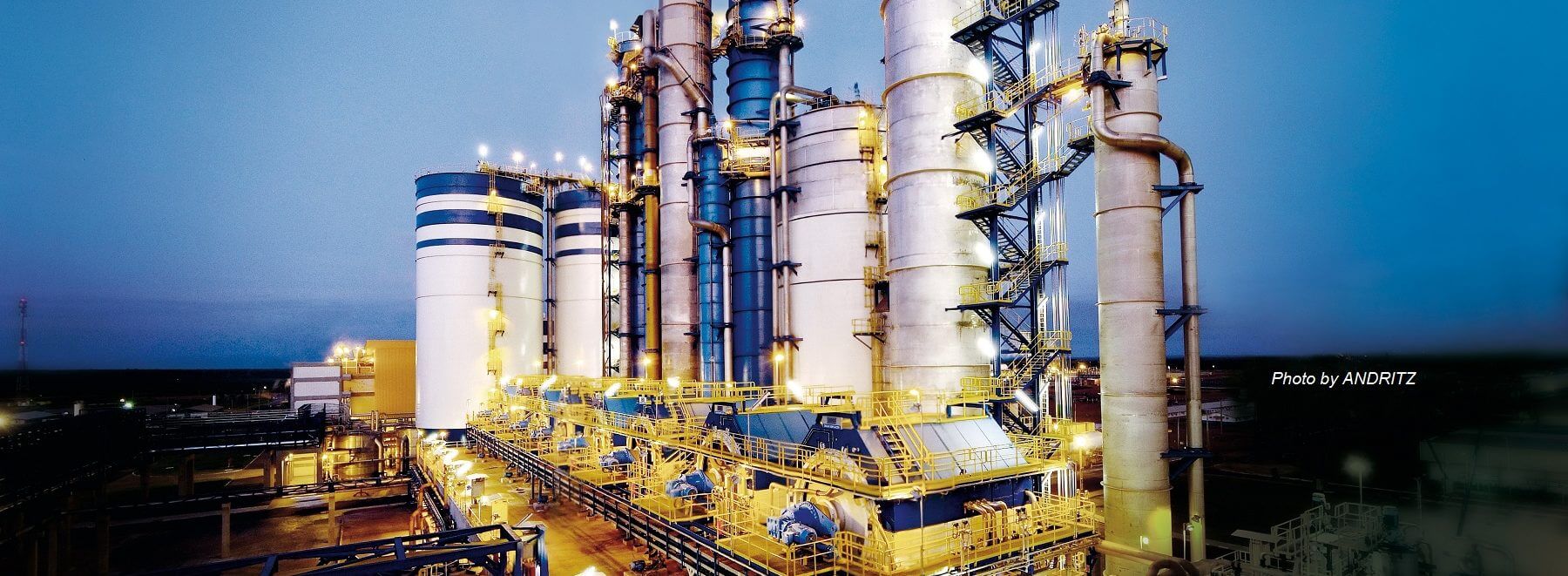Recovery Boiler
The thick liquor from the evaporation plant is burnt in the recovery boiler - a large steam boiler. This process has two objectives:
-
To generate steam for use in the mill by burning dissolved wood substance
-
To recover cooking chemicals
During combustion the reaction products between lignin and cooking chemicals are broken down so that further treatment can convert the chemicals back into new cooking liquor. The inorganic chemicals are converted into a smelt and collected at the bottom of the furnace. It contains among others sodium carbonate (Na2CO3) and sodium sulphide (Na2SO3). The smelt flows out and is dissolved in a liquor from the lime mud washer, known as weak liquor. After the smelting process the liquor is called green liquor.
The steam produced in the recovery boiler is economically important to the pulp mill. It provides enough heat to meet the demands on the pulping process and often there is enough steam over to produce electric energy in a steam turbine. Especially in newer and larger pulp mills, the electric energy is significant and the excess electricity can be sold on the open market. As the source material (i.e. wood) is renewable, this is considered “green energy”.
Examples of NAF valves used in this process
- NAF Setball V-port ball sector valve – Black liquor gun applications (spraying of high consistency black liquor into the furnace), liquor return, tank level control
- NAF Duball DL full bore ball valve – Green liquor, not clarified, black liquor, weak liquor
- NAF Torex triple offset butterfly valve- Water and condensate to tank




